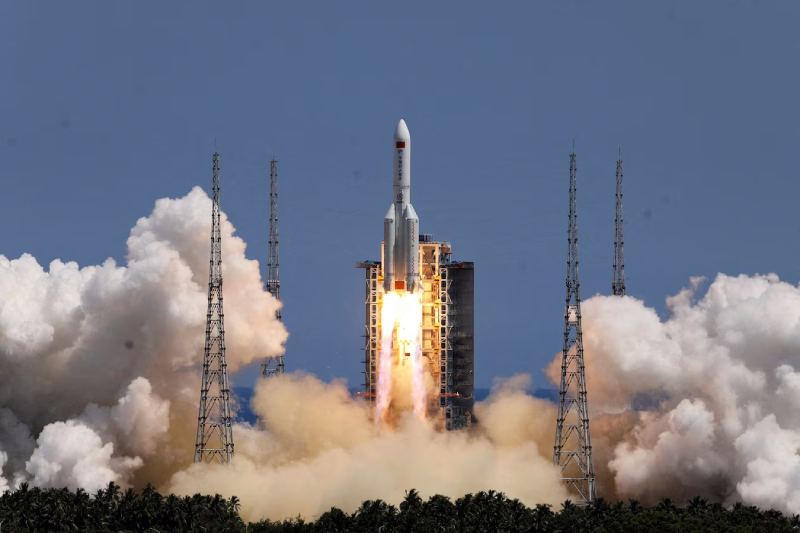During its third voyage, China’s experimental reusable spacecraft successfully launched an unidentified item into orbit.
The object was identified by U.S. Space Force space domain awareness personnel as 59884 (International designator 2023-195G). After taking off on December 14, 2023, the possible spacecraft has spent 164 days in orbit. It looks that the item was released on May 24.
Space activity tracker Jonathan McDowell of the Harvard-Smithsonian Center for Astrophysics initially reported the incident. On X, the former Twitter, he made conjectures about the object’s possible nature. These included subsatellite deployment and hardware ejected before mission conclusion and deorbit.
Additionally, the item can be employed for capture and proximity maneuvers. During its second flight, the spacecraft conducted repeated recaptures using an object that had been released as part of on-orbit testing.
China has kept information on the mission very confidential. The space authorities of the nation have not made any photographs or descriptions of the spacecraft public. A brief launch report that was released hours after the event is the only official Chinese report on the activity.
According to the paper, “space science experiments and reusable technology verification will be carried out as planned to provide technical support for the peaceful use of space during this period.”
The spacecraft is thought to be China’s attempt to create capabilities akin to those of the X-37B. It’s on its third mission right now. Reusable spacecraft, which have the potential to lower costs and increase mission frequency, constitute a significant leap in space technology.
The spacecraft can carry slightly more than eight metric tons into low Earth orbit on the Long March 2F rocket, which launched it. This implies that the spacecraft might resemble the X-37B spaceplane of the United States Air Force in terms of size and capability.
Reported photos of the payload fairing wreckage retrieved from the second launch and shared on the social media platform Sina Weibo appear to support this theory. The pictures may provide hints about the spacecraft’s size and form.
The first flight took place in 2020 and lasted for two days, while the second voyage took place in 2022 and lasted for 276 days. An item was released at each of the orbital trips.
One year and eleven months passed between the spacecraft’s first and second missions, which launched in 2020 and 2022, respectively. There was a seven-month turnaround for the third mission.
On its third mission, the spacecraft made adjustments to its orbit. The spacecraft started its first orbit, which measured 333 by 348 kilometers and was 50 degrees inclined. The spacecraft later boosted its orbit through a series of maneuvers to a current orbit of 602 by 609 kilometers, according to data from the U.S. Space Force’s space domain awareness program.
The orbital component that will function in conjunction with a reusable suborbital first stage could potentially constitute the reusable spaceship. In 2021, testing of a reusable suborbital spacecraft took place for the first time. August 2022 saw the launch of a second mission. The suborbital vehicle takes off vertically and lands horizontally.
Before the spacecraft’s initial launch, its creator, the China Aerospace Science and Technology Corporation (CASC), revealed plans to create a completely reusable, two-stage-to-orbit (TSTO) space transportation system. The Chinese Natural Science Foundation provided national level financing for CASC’s spaceplane project in 2022.
On December 28 of last year, the U.S. Space Force X-37B spacecraft embarked on its sixth mission. Observers of space activities indicate that the spacecraft, which was launched on a Falcon Heavy for the first time, was taken to a much higher altitude and a very elliptical orbit with a high inclination. Flight testing of the covert and self-governing X-37B reusable vehicle started in 2010.
